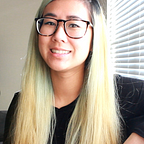Useful tips for job seekers - from one tired applicant to another
If you’re like me, you may be feeling burnt out from the job search process. You might have submitted X number of applications, but haven’t heard a peep.
I’ve submitted 250+ applications on LinkedIn with 26 initial interviews completed so far. Here are some tips you can use to optimize your own resume before you shell out $200 for an “expert” resume review. Let’s get more interviews!
ATS-proof your resume
For most industries, it makes sense to optimize your resume for Applicant Tracking Systems (ATS). To learn more about how this system works, here’s a great post that was written by a technical recruiter.
Typically you’ll want to follow these rules:
- Use a one-column resume (I know there are debates about this, but this is what I personally think works best)
- Use a simple, readable font (according to Jobscan, they found Times New Roman and Arial to be the best) and ditch the colors
- Keep it to one page (allegedly recruiters take only 7.4 seconds to scan your resume)
- List out your skills either in a sentence or bullet points. NO arbitrary skill bars are allowed here!
The goal is to ensure someone can quickly and easily scan your resume to see why you are qualified for the role. There are plenty of free resume scanners like ResyMatch, Jobscan, etc. Use these to see if your template is ATS-friendly. Or, please feel free to make a copy of mine here.
General LinkedIn tips
You might have seen a job that was just posted an hour ago with over 200 applicants. People program bots to apply for them. I’m not technical enough to do this, so here’s what I have done that works:
- Some job postings will list the recruiter for that role. IF you’re going to submit a Cover Letter (more on that below), go ahead and address them by name. If not, you can also send a nice follow-up note to them directly on LinkedIn. I may do this a day or two after applying, or a week later if I haven’t heard from them.
- If the recruiter is not listed for the role, see if you can narrow it down by going to the company’s LinkedIn page -> click “employees” -> search “recruiter” or “talent acquisition” -> message the one that seems most relevant. For example, Technical Recruiters typically hire for software engineering roles, whereas Business Recruiters would hire for more operations-based roles. You can also message one of the recruiters and include the note, “P.S. If you’re not the right recruiter, can you please direct me to who is?”
- While we’re on the topic of LinkedIn, make sure your LinkedIn profile is updated! Include the job you’re applying for as your headline and include those job description keywords on your profile.
- Pay close attention to the ones labeled “Actively Recruiting” and “Promoted.” This means they are actively looking to hire someone, so it should hopefully increase your chances of getting interviewed.
Caveat: Some recruiters might wait until they have X number of applicants to review and then reach out. This is where you can work your ✨magic✨ and follow up with them directly!
- Use your connections! Don’t be afraid to politely ask for a referral from your network. 82% of employers rated employee referrals above all other sources. After all, it really is about who you know.
The dreaded Cover Letter
For the 250+ applications, I probably submitted Cover Letters for ~35% of them. There was one interview where the hiring manager actually referenced reading my letter!
My takeaways:
- Use Cover Letters for jobs that you REALLY want
- You don’t want to regurgitate what’s already on your resume. You want to showcase how your expertise will bring value to the company. Here’s a nice template from Wonsulting.
- Tailor it to the company, but don’t stress about it
This is a hot topic amongst people in r/resumes. Pro-CLs say that a Cover Letter helps them decide between two equally qualified candidates. I say if you have the time and want to go all-in— go ahead. There’s also AI-based CL generators out there you can use. Based on my experience, LinkedIn messages had a bigger impact on my interview outcomes than CLs.
Quick rant
Dear Workday Design and Workday Technology,
I now have a billion separate accounts for all of these companies I’ve applied to. Is there no way to just merge it into one account for everyone!? 😭
Final words
So, job hunting in 2022. Is it really a numbers game? My answer: yes. But there are ways you can maximize your chances of getting interviewed. For every 10 applications, I actually received one interview. Not bad, right?
I think I’ve only touched the surface of what job seekers can do to optimize their chances of getting interviews. Hopefully, you have found this helpful or learned something new.
Leave your tips in the comments and/or connect with me on LinkedIn! :)
